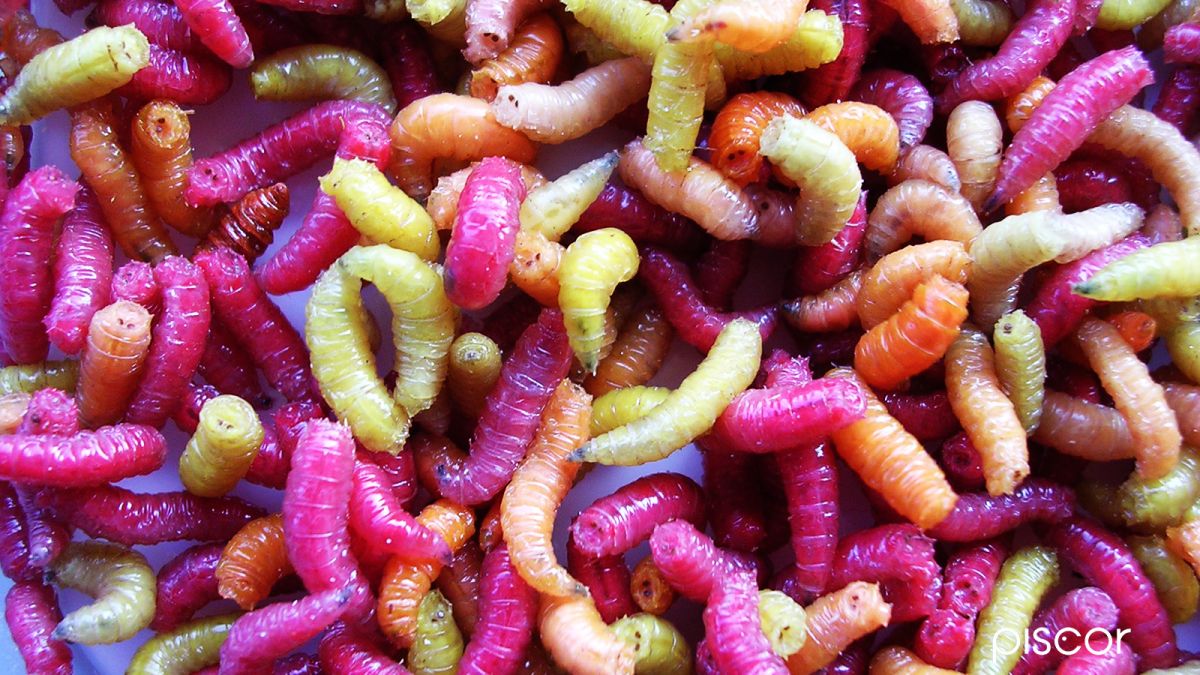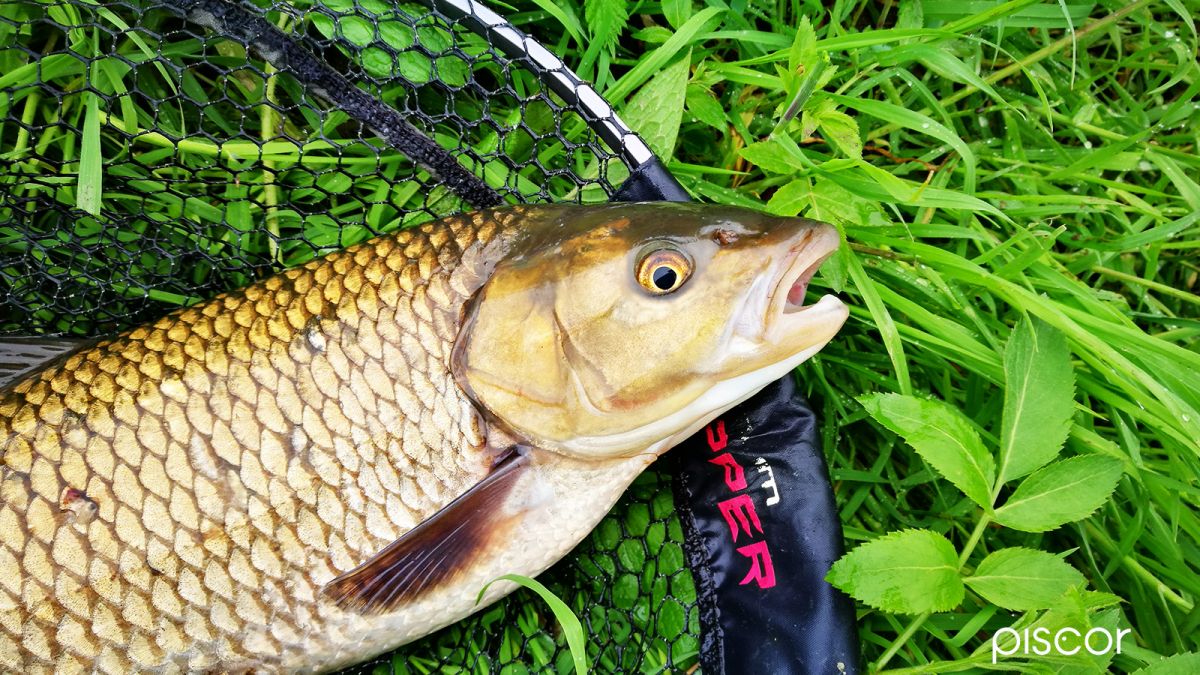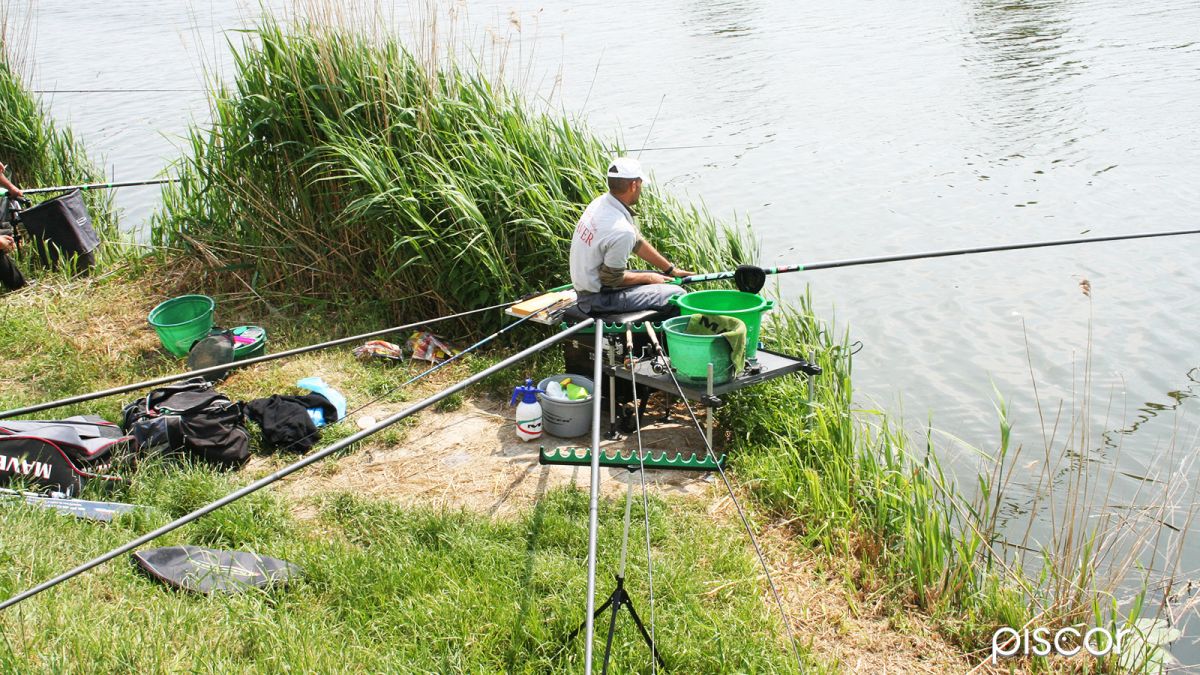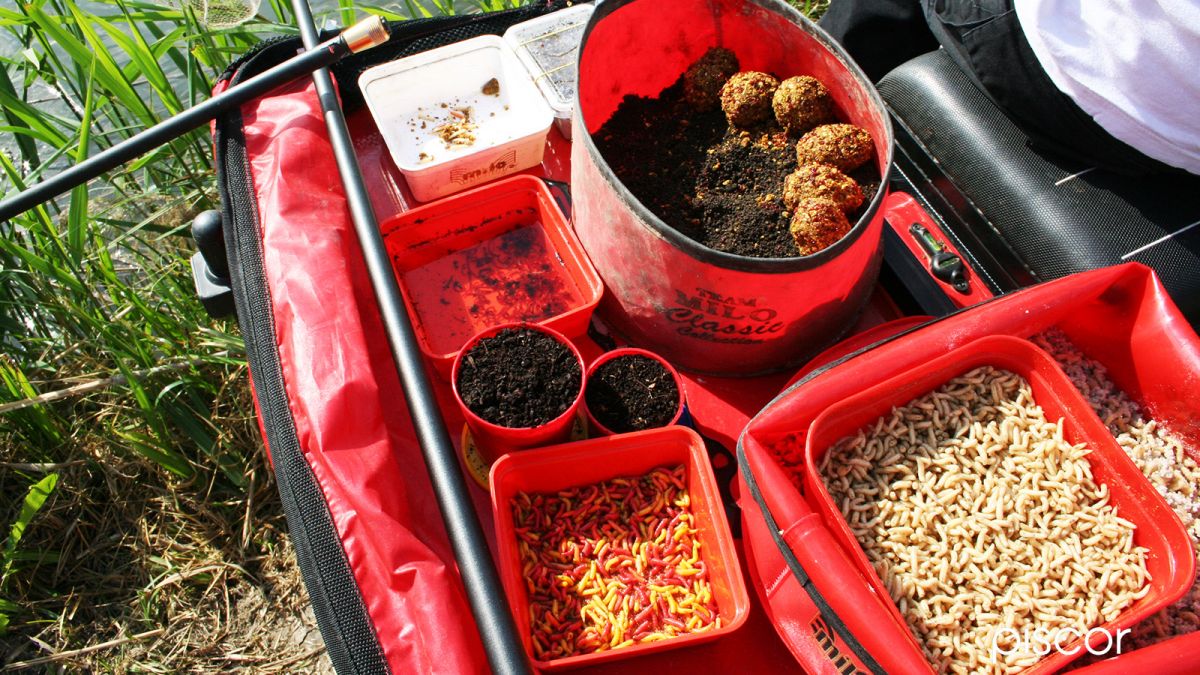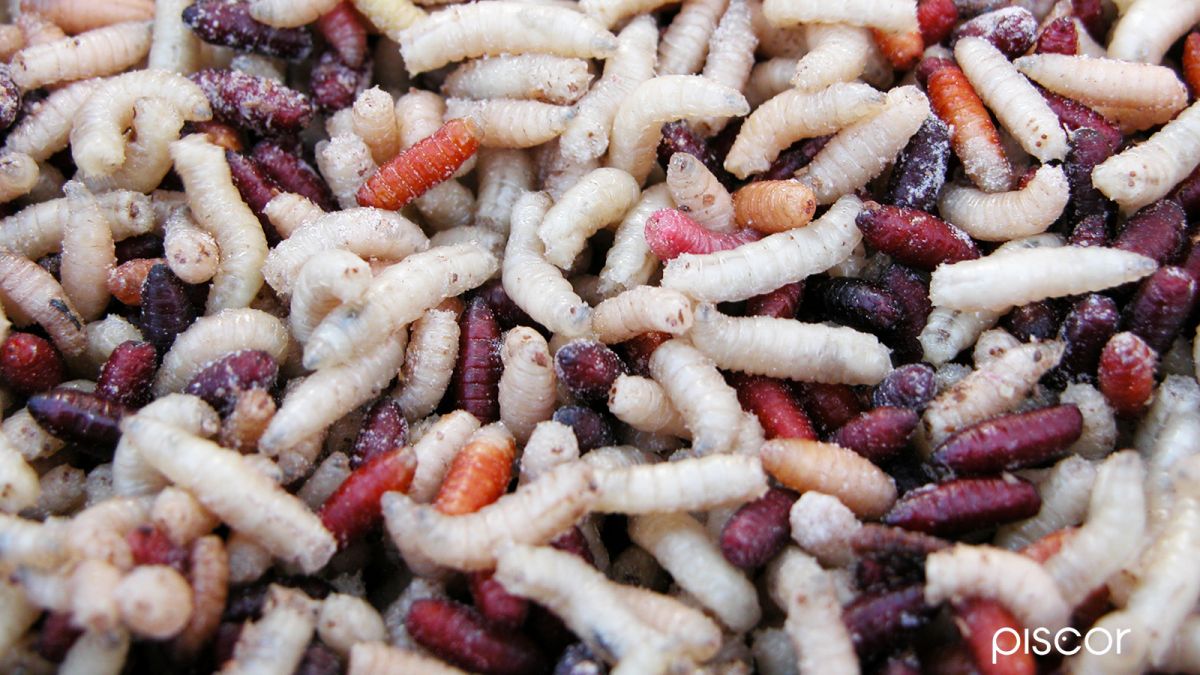How many times, from our regular shopkeeper, when buying the maggots we ask to put in the bag a pinch of "colorful" to trigger? The answer is almost obvious: always.
In most cases, at this point, a hundred red larvae fall into the bag.
Very rarely, along with the red, there are others of different colors. In any case, this is an almost insignificant addition of coloured larvae to the large mass of natural coloured maggots. This is because they are sufficient and advance for the trigger, the only destination for which they are intended.
In the experiences gained abroad during trips dedicated to fishing, you notice a very different behavior by fishermen from other countries.
In Spain, for example, the situation is very similar to Italy, while in France, but especially in England, things are very different.
While in an Italian or Spanish store you will find a quantity of white maggot that stands to the colored in a ratio of 50:1, that is one kilo of colored every 50 kilos of natural, in any English store well stocked with baits you will find, in well separated tanks, natural maggots, red, yellow, orange, green, bronze, pinkies and other types of larvae of fly in equivalent quantities in different colors.
Customers buy coloured maggots and put them in separate boxes and, often, depending on the fishing spot, there are those who buy just a pinch of natural white for the trigger and most of the larvae destined for baiting are reds.
There must be a reason for this, but first of all, I think we should ask ourselves a question: "But do fish, do they see colours?" Perhaps the opinion of an ichthyologist could be interesting, but this is not the point, because to understand that in certain situations the coloured maggots makes better than the natural white, it is enough the experience of the fisherman.
One of the major differences in behavior between fishermen from different backgrounds we have already said above: in Italy the colored maggot is used almost exclusively for triggering, unlike the English who make a massive use of color, especially red and bronze, even as a pasture.
Why? Since Spanish fishermen also have the same uses as us, while those in northern France behave like the English, the first consideration that comes naturally concerns the climate and, above all, the difference between the amount of daily light, especially in the intermediate seasons, existing between the Mediterranean regions and the northernmost ones.
Little light and muffled colours, perhaps this is the reason for the massive use of the red maggot in the central-northern regions of Europe. We do not know exactly how things stand in Germany, but we are prepared to bet that they are very similar to those in England and France.
The 'colour question', however, is and will always remain a reason for discussion among fishermen and not just to ask whether fish distinguish it or not.
There are, for example, those who are sure that a colored maggot triggered and floating on a carpet of white larvae stands out better and is seen and taken with greed by the fish, but there are also those who say, and may not have all the wrongs, that presenting the fish with a bait different from those found on the bottom creates suspicion and distrust. Let's see now the potential and the use of some colors in relation to the environment and the fish.
Red
One of the bases of fishing with regard to baiting is to use a light pasture in clear water and a dark pasture in dark water. Now, those who know English or French waters, know that they are not really transparent, but have a natural color tending to dark, in some cases, even heavily brown.
It is clear that the amount of light passing through these waters is small and at less than two metres of depth, if there is no darkness, there is little missing. Here, then, that the grazing with red maggot can be the winning key.
Extensively, even in our country, where there are similar water conditions, the red maggot used as bait and for baiting can become important.
Sometimes water is certainly not an example of transparency and red dominates in absolute: from the pasture, to the triggers of both maggots and corn. Let us not forget, then, an issue of considerable importance. Red is the colour of the larva which, by far, should be considered the most natural for cyprinids, i.e. fouilles.
This chironomide, however, is not always available, neither for a catch, nor for most competitions. The reasoned use of red raptors in pasture or alone, in this case, can produce very positive effects.
Then there is the matter of small fish, which has always been fished mainly with red fish, either as a trigger, but also as a reminder in the form of pinches of larvae thrown into the water or mixed with the pasture.
These little fishes like the red so much that, at times, this can be considered a problem and, if we look for fishes of size, triggering larvae of this colour, we risk to be disturbed by the small fish. Speaking of this colour, we must also say that there is red and red.
There is the bright one, luminous, but also the one tending to the burgundy, more discreet and less luminous. The maggot of this last colour are to be preferred when there is to be made a mixed trigger with the ver de vase: they make volume, but do not contrast too much with the rest and if the fish is particularly difficult, this should not be forgotten.
Yellow
The yellow maggot is a good choice in very clear water for all cyprinids, with rudds in the foreground. It may be because of the brightness of the color, but this species is very attracted. It is not a despicable bait, if triggered with a tuft, also for the carp.
It is probable that the yellow enhances the alimentary message simulating the corn grain. For some Northern European fishermen it is an essential bait for large breams. Considering the common use by these fishermen of very dark pastures, sometimes black, a yellow maggot on a stain of that color is like a light bulb lit in a dark room.
It is a fact that there is not too much to object to the choices and firm convictions of the fishermen, but it is quite strange that the English refuse to accept this colour when they go in search of large breams. For them, red is a guarantee of success for this species. Country that you go...
Orange
It is a fairly common colour throughout Europe, although not at the level of red. Let's say that this color can give good results especially in channels populated by carasses, especially if of small-medium size.
Sometimes we give an importance to events that do not deserve to happen, maybe we change the final or weight of the float and resume catching fish after a break and give that change the merit of having resumed catching.
It is likely that, even if we hadn't changed anything, we would have caught it again, because it was a temporary removal of the fish, but we like to think that way.
We like to give a logical explanation that sometimes there is not or is pulled by the hair. These things are difficult to prove, but in the case of bait, almost always, varying the type and mode of ignition or color produces demonstrable effects.
Here is that with the orange maggot, very often, in canal such as Cavo Lama or Fiuma you invite to eat some more crucian carp in moments of heavy fatigue. It is worth remembering that a very bright orange, almost fluorescent, is the best for fishing small fish and, in particular, bleak in murky water or to fish constantly in the cloud of the pasture. There is nothing better.
Bronze
Almost unknown in our country, the colorful maggot of a beautiful bronzed brown is the most popular in England. There is no English agonist or fisherman who does not have with him a beautiful box full of big tins of this color.
Undoubtedly the colour of the English waters matches the bronze maggot, but at the base there must be a more valid technical reason that perhaps must be sought in the resemblance of the colour of this maggot with that of a bait equally popular in England, that is the immature caster, the one that sinks.
The latter is a rather delicate bait that a retrieve not even too violent comes off the hook. The substitution of the small chrysalis with a maggot more or less of the same colour, if the fishing is not too difficult and the fishes do not go too thin, guarantees a longer duration of the bait and avoids having to continuously check the trigger.
Unfortunately, in Italy the maggot treated with this color are difficult to find, but it would be interesting to make tests to test the effectiveness.
Other colours
Theoretically, the maggot could also be coloured in purple, given the existing range of dyes, but I believe that, in addition to the main colours seen above, what can have some positive feedback is green.
A few years ago, among the coloured ones, some green maggot was found, today it is rather rare. However, at the time, I tried them and they were not bad. Probably the fishes were attracted by the similarity of colour with many aquatic larvae, their natural food and with the vegetables, and we know that many cyprinids have a diet in which these have a certain importance.

